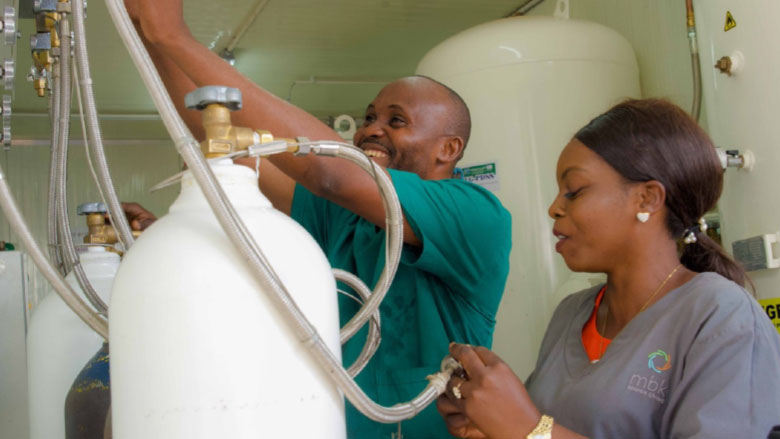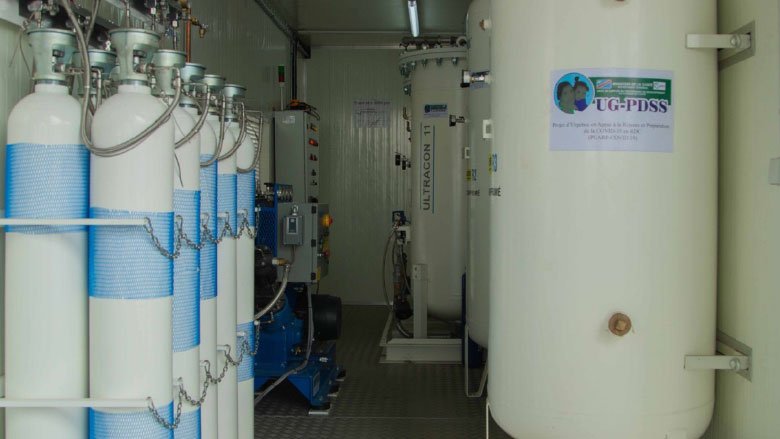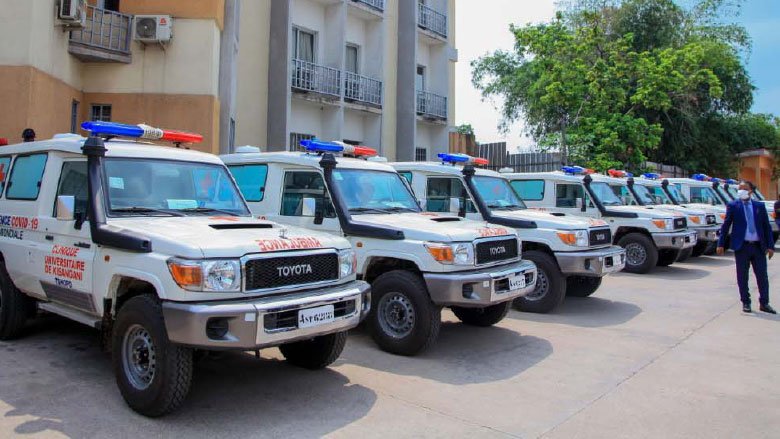In March 2020, the Democratic Republic of the Congo (DRC) found itself in the middle of the COVID-19 pandemic and its deadliest outbreak of Ebola to date. Together, the two exposed the fact that, when it came to hospital care, many critical resources were lacking, including equipment for intensive care, cold chains needed for immunization, and medical oxygen.
The DRC not infrequently experiences outbreaks of measles, polio, cholera, monkey pox, the plague, meningitis, and Ebola. The 2020 outbreak of Ebola was its tenth. But the Strategic Response Plan it used to combat the Ebola virus disease (EVD10) that year proved curiously helpful, leading to improvements in its management of infectious disease—through capacity building, with the training of clinical staff and strengthening of care health facilities—at a time when the good disease management was most needed.
A randomized controlled trial, conducted in the Eastern DRC—itself a remarkable feat in a conflict zone—established specific treatment for Ebola and led to a decrease in its case fatality rate. The DRC was able to leverage the expertise it gained controlling Ebola for its response to COVID-19, using public health infrastructure, a national Incident Management System, surveillance systems, and staff trained in epidemic response.
The Need for Medical Oxygen
Oxygen therapy is critical for the treatment of moderate and severe cases of COVID-19. In January 2021, the World Bank and the Programme de Développement du Système de Santé (PDSS) joined a Ministry of Health (MOH)-led mission to evaluate increased levels of mortality in the Eastern DRC. A rapid assessment by a clinical team from the DRC’s Technical Secretariat attributed the higher death rates seen in communities and hospitals to the lack of medical oxygen.
Another study conducted by the MOH and the global health nonprofit PATH showed that most health facilities across the DRC lacked supplies of medical oxygen, which the World Health Organization considers essential not just in critical care but at all levels of a health care system.
The World Bank COVID-19 Strategic Preparedness and Response Project financed the procurement of 1.5 million liters of oxygen for key COVID-19 treatment centers. As a fundamental therapy for seriously ill COVID-19 patients, this helped save many lives. Discussions with the MOH and other partners led to a longer-term solution for oxygen supplies. The gap was filled by Pressure Swing Absorption (PSA) oxygen generating plants, which create medical-grade oxygen by purifying oxygen from ambient air.
Under the project, the DRC was also able to purchase and install eight oxygen plants for key hospitals in five provinces. These High-Quality Container Medical Oxygen Plants use the latest technology; hospitals with them can now give medical oxygen to COVID and other patients. As well as installing the PSA plants, engineers from the MOH trained hospital staff on how to maintain them.
Equipping Intensive Care Units
An innovative Facilitated Procurement mechanism was used to buy other equipment for intensive care units after a technical evaluation showed there were only about 60 ventilators in the entire country.
The supply of ventilators on the international market was extremely limited, given the demand for them at the time. The World Bank trained MOH counterparts in the procurement mechanism, an initiative that involved collaboration between the Bank’s Health, Nutrition, and Population and corporate procurement teams, in large part to overcome the Francophone language barrier.
The transparency and speed of the procurement process allowed the PDSS project’s Project Implementation Unit (PIU) to get contracts signed in record time and receive goods from most of its suppliers in three months. The PIU acquired 400 intensive care beds and critical care-related equipment worth $20 million to equip 59 hospitals in 15 provinces.
Critical care capacity has been expanded, with the training of health care workers and overall upgrade of health care facilities. Project financing has also been used to recruit a third party to check project-financed equipment is available and used properly.
Doctors acknowledge the difference this has made. “The equipment we received has made it easier to monitor the vital signs of patients in the isolation and intensive care units and react quickly when patients’ conditions are unstable to avoid the worst,” said Dr. Sebastien Ngilima, Director of the Goma Provincial Hospital in Eastern Congo.
“Before,” said Dr. Patrick Mayi, Head of Emergencies at the Provincial Hospital of Kinshasa, even if patients arrived with a critically low oxygen level “it took about an hour to access medical oxygen because families had to go to obtain oxygen and, by the time it arrived, it was too late. … Now we have the capacity to provide oxygen to critical patients in three minutes on average at their bedside.”

The DRC is a vast country, roughly equivalent to the size of Western Europe. Extremely poor road connectivity makes for challenging logistics when it comes to the active finding of cases during a pandemic or epidemic. It also poses challenges for contact tracing and vaccine distribution.
Strengthening the Cold Chain and Logistics
The COVID-19 Project expanded the mobile fleet that health services needed for investigation, patient transfer, and contact tracing by providing ambulances and motorcycles. The MOH, Gavi, and UNICEF carried out a needs assessment as part of the Expanded Program on Immunization to prepare for the rollout of COVID-19 vaccines. This helped determine what was needed to scale up vaccine distribution nationwide, not just for COVID but for more routine immunization campaigns requiring ultra-cold freezers.
World Bank financing of $43 million is being allocated for environmentally friendly cold chain equipment, adapted to the context of vaccination campaigns in the DRC.


